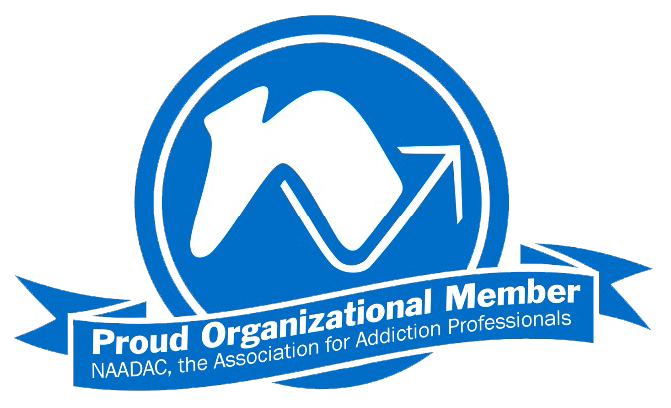-
GeneralGeneral
-
Substance Use and Public Health Homepage

This course has been updated to better reflect the current themes surrounding Substance use and Public Health. If you are already enrolled in this version of the course, you are allowed to complete it and obtain a certificate or register for the new course version on this link.
This course provides information on substance use and public health. It addresses the burden of substance use disorders (SUD), the impact of prevention strategies, interventions and control programs, and ethical research practices in SUD care to ensure effective positive health outcomes. By the end of this course, students will be able to use screening tools to assess substance use disorders and identify prevention and treatment protocols to reduce the impact of substance use disorders within a population.
The SUD and Public Health course is sponsored by the Annenberg Physician Training Program. Like all NextGenU.org courses, it is competency-based; competencies were developed in collaboration with subject matter experts, and take into consideration Tap 21 Addiction Counseling Competencies from the U.S. Substance Abuse and Mental Health Services Administration (SAMHSA), which benchmark how curricula, educational programs, and professional standards are measured in the U.S. SUD treatment field, the Principles of General Care (GPC) for people with Mental, Neurological and Substance Use Disorders (MNS) conditions developed by the World Health Organization’s (WHO) Mental Health Gap Action Programme (mhGAP), and the WHO and United Nations (UN) International Standards for the Treatment of Drug Use Disorders.
The course uses learning resources from accredited, world-class organizations such as the Joint United Nations Programme on HIV/AIDS, Substance Abuse and Mental Health Services Administration, U.S. Centers for Disease Control and Prevention (CDC), the U.S. National Institutes of Health, and the World Health Organization. The course was designed by Hugo Rojas, MD, MSc; Juan Jose Pemintel, MD; Leohrandra Graham, MSc; Margaret Niles, PhD, MEd, DipID; Valeria Reynolds, MD, MPH; Pablo Baldiviezo, MD.
For publications on NextGenU.org’s courses’ efficacy, see “A Novel Integration of Online and Flipped Classroom Instructional Models in Public Health Higher Education,” (2014), BMC Medical Education, “Building Public Health Capacity through Online Global Learning,” (2018), Open Praxis, or on NextGenU.org’s publication page. Subscribe to our newsletter to be notified of future updates, new courses, and to be part of our community.
There are five Substance Use Disorder (SUD) modules to complete, which include:
- Module 1: Introduction to SUD in Public Health
- Module 2: Identifying SUD
- Module 3: SUD Interventions and Control
- Module 4: SUD Prevention Strategies
- Module 5: Ethics and Research in SUD Care
The completion time for this course is estimated to be 125 hours which includes 63 hours of didactics and curated resources and 62 hours of work participating in activities and quizzes to assist the student in the synthesis of the materials. This course is equivalent to 3 credit hours.
Upon completion of the training (5 modules), participants will need to complete a final exam”. The final exam will be designed so that participants can have three opportunities to answer correctly until the required score of 70% or higher is obtained.
At the end of each lesson, there is a practice quiz of ten to fifteen (10-15) multiple-choice questions. At the end of the course, after you’ve completed each lesson, quiz, and learning activity, you’ll have access to a final exam of forty multiple-choice questions, and a chance to evaluate this course. Once you’ve passed that last test, you will be able to download a certificate of completion from NextGenU.org and our course’s co-sponsoring organization the Annenberg Physician Training Program. We keep all of your personal information confidential, never sell any of your information, and only use anonymized data for research purposes, and we are also happy to report your testing information and share your work with anyone (your school, employer, etc.) at your request.
Engaging with this Course:
You may browse this course for free to learn for your personal enrichment; there are no requirements. To register for this course, it is required that learners have obtained a college-level/bachelor's degree.
To PASS and Obtain a Certificate
- all the reading requirements,
- all quizzes and pass with 80% having unlimited attempts,
- all case studies,
- the final exam with a minimum of 80% and a maximum of 3 attempts, and
- the self and course evaluation forms.
NextGenU.org is happy to provide your institution with
- a link to and description of the course training, so they can see all its components, including the cosponsoring universities and other professional organization cosponsors;
- your grade on the final exam;
- your work products (e.g. case study activities), and any other required or optional shared materials that you produce and authorize to share with them;
- your evaluations -- course, and self-assessments;
- a copy of your certificate of completion, with the co-sponsoring universities and other organizations listed.
To obtain a degree, NextGenU.org co-sponsors degree programs with institutional partners. To obtain a full degree co-sponsored with NextGenU.org, registrants must be enrolled in a degree program as a student of a NextGenU.org institutional partner. If you think that your institution might be interested in offering a degree with NextGenU.org contact us.
We hope that you will find this a rewarding learning experience, and we count on your assessment and feedback to help us improve this training for future students.
Here are the next steps to take the course for credit:
- Complete the registration form.
- Take the pre-test.
- Begin the course with Module One. In each lesson, read the description, complete all required readings and any required activity, and take the corresponding quizzes.
This course meets nationally approved standards of education developed for the addiction/substance use disorders counseling profession. This course's participants are assured that the continuing education (CE) credits provided will be accepted toward national credentialing by the NAADAC Certification Commission for Addiction Professionals (NCC AP), as well as by many of the individual state licensing/certification bodies in the addiction and other helping professions.
*This course is sponsored in part by the Annenberg Physician Training Program: Abstinence-based Recovery from Addictive Disease. -
Module 1: Introduction to Substance Use Disorder in Public Health
Instructional Goals covered in this module:

- Understand different models of addiction and the impact of substance abuse on individuals and public health.
-
Module 1: Lesson 1: Introduction to Substance Use Disorders
Student Learning Outcomes:
Upon completion of this lesson, you will be able to:- Define key terms associated with substance use.
- Describe different models of addiction.
- Examine substance use as a chronic relapsing disorder.
- Explain what substances are used and abused and their effect on an individual's health and social functioning.
9 URLs -
Module 1: Lesson 2: The global impact of Substance Use Disorders
Student Learning Outcomes:
Upon completion of this lesson, you will be able to:- Explore trends in the global burden of mental, neurological and substance use disorders (MNS)
- Review the UNGASS 2016 position regarding the role of public health in addressing substance use disorders
2 URLs, 1 Forum -
Module 2: Identifying Substance Use Disorders
Instructional Goals covered in this module:

- Describe the established diagnostic criteria for substance use disorders.
- Recognize the challenges faced in public health environments in treating substance use disorders with coexisting medical and mental health conditions.
- Explain the socio-economic, political, and cultural factors that influence substance use risk and resiliency among individuals and groups.
-
Module 2: Lesson 1: Assessment of Substance Use Disorders
Student Learning Outcomes:
Upon completion of this lesson, you will be able to:- Differentiate among the main categories of substance use disorder behaviors.
- Explore commonly used substance use disorder screening instruments/tools.
3 URLs -
Module 2: Lesson 2: Identifying the comorbidities of substance use and medical and mental disorders
Student Learning Outcomes:
Upon completion of this lesson, you will be able to:- Illustrate how substance use disorders mimic a variety of medical and mental health conditions. Detail the comorbidities that may develop with substance use disorders.
- Examine co-morbidities associated with alcohol and other substance use abuse including HIV, diabetes, hepatitis, depression, psychosis, and reproduction implications such as fetal alcohol spectrum disorders.
- Determine the special reproductive health issues for women in relation to substance use, comorbidity, and pharmacological treatment.
5 URLs, 1 Forum -
Module 2: Lesson 3: Coping with risks associated with substance use disorders.
Student Learning Outcomes:
Upon completion of this lesson, you will be able to:- Examine the strategies used to recognize severe symptoms of mental illness and substance use.
- Analyze policies and procedures for handling crises and dangerous situations with people who have substance use disorders.
4 URLs -
Module 2: Lesson 4: The Social Determinants of Substance Use Disorders
Student Learning Outcomes:
Upon completion of this lesson, you will be able to:- Correlate the social determinants of health to the risk of individual and group development and sustenance of substance use disorders.
- Analyze the factors that can contribute positively to individual and group resiliency to substance use.
3 URLs -
Module 3: Intervention and Control
Instructional Goals covered in this module:

- Understand models of treatment, recovery, and relapse prevention for addiction and related problems.
- Propose strategies to reduce the negative effects of substance abuse according to different states of change and cultural identities.
-
Module 3: Lesson 1 : Substance use disorders treatment and relapse prevention
Student Learning Outcomes:
Upon completion of this lesson, you will be able to:- Describe the components of comprehensive substance abuse treatment.
- Explain the models and effectiveness of relapse prevention.
- Discuss recommendations for public health interventions to promote treatment, recovery, and relapse prevention of addiction.
- Compare and contrast autonomy and independent living with the institutionalization of persons coping with substance use disorders.
Click here to start this lesson6 URLs -
Module 3: Lesson 2: Intervention considerations in therapy and control of substance use disorders
Student Learning Outcomes:
Upon completion of this lesson, you will be able to:- Determine the effectiveness of psychotherapeutic interventions.
- Examine the advantages and disadvantages of pharmacotherapy interventions as a treatment option for substance use disorders.
- Assess strategies to minimize the negative physical and social impact incurred by the behaviors related to drug use.
- Differentiate stages of change and processes to undertake behavior change.
- Compare different intervention strategies for substance abuse.
- Propose addiction interventions that are sensitive to different cultural identities or states of change.
11 URLs, 1 Forum -
Module 4: Substance Use Disorder Prevention Strategies
Instructional Goals covered in this module:

- Understand the role of healthcare providers along with social and environmental factors in the prevention of substance use disorders.
-
Module 4: Lesson 1: Prevention stategies for alcohol, tobacco, and other substance use disorders
Learning Objective:
Upon completion of this lesson, you will be able to:- Investigate the range of policy options used to prevent alcohol, tobacco, and other substance use problems in society.
- Summarize addiction risk and protective factors.
- Analyze the impact of policy and environmental interventions on the prevention of substance use disorders.
Click here to start this lesson6 URLs -
Module 4: Lesson 2: The role of healthcare workers and social and community support in preventing substance use disorders
Learning Objectives:
Upon completion of this lesson, you will be able to:- Examine the role played by family, social networks, and other community systems in the prevention of substance use disorders.
- Explore addiction prevention strategies such as social and community support, including educational, housing, and vocational support.
- Describe the role of healthcare workers in the prevention of substance use disorders.
4 URLs, 1 Forum -
Module 5: Ethics and Research in SUD Care
Competency covered in this module:

Be competent in addressing stigma, and promoting and protecting the human rights of those you serve.
-
Module 5: Lesson 1: Addressing stigma in substance use disorder care settings
Learning Objectives:
Upon completion of this lesson, you will be able to:- Define stigma in the substance use disorder context.
- Examine the impact of stigmatization, marginalization, and discrimination on SUD treatment /interventions.
- Compare the strategies to mitigate stigmatization, marginalization, and discrimination in SUD care settings.
Click here to start this lesson8 URLs, 1 Forum -
Module 5: Lesson 2: Ethical Issues in Substance Use Disorder Treatment settings
Learning Objectives:
Upon completion of this lesson, you will be able to:- Explore the general ethical principles that provide the basis for addressing concerns in substance use disorder treatment settings.
- Summarize the ethical dilemmas faced in substance use disorder treatment settings.
- Examine the relevance of the NAADAC Code of Ethics in guiding client-counselor relationships in substance use disorder treatment settings.
4 URLs -
Module 5: Lesson 3: Challenges in Substance use Disorder Research
Learning Objectives:
Upon completion of this lesson, you will be able to:- Summarize the approach strategies for research involving human participants in LMICs.
- Examine the key challenges that impact substance use disorder research in LMICs.
- Explain the importance of gaining informed consent of the person involved in the SUD research.
- Determine the appropriate response strategies to the disclosure of private and distressing information e.g., self-harm, sexual assault.
8 URLs, 1 Forum -
Course and Self Evaluation & Certificate
 In this section, you can provide feedback about this course to help us make NextGenU.org better. Once evaluations are completed, you will be able to download your certificate of completion.
In this section, you can provide feedback about this course to help us make NextGenU.org better. Once evaluations are completed, you will be able to download your certificate of completion.

